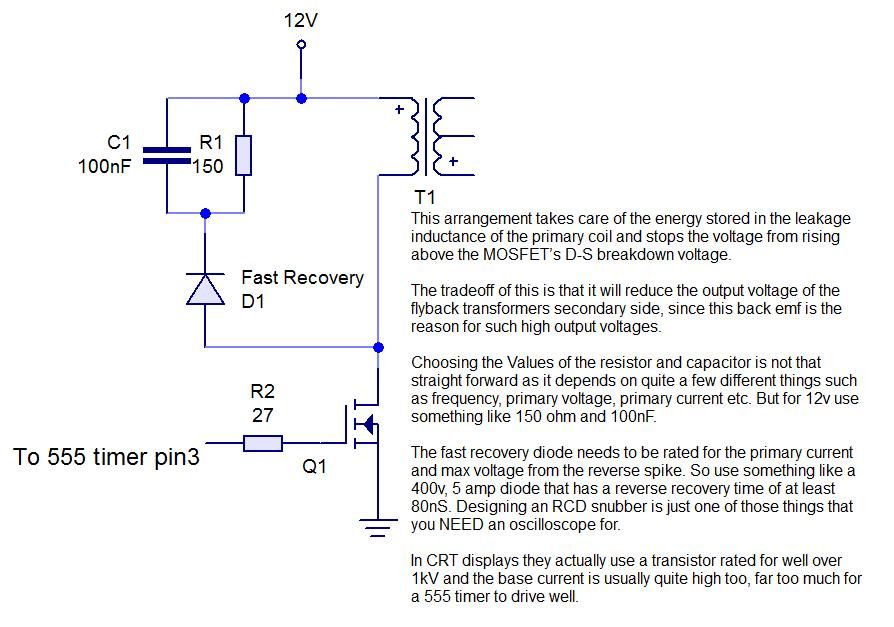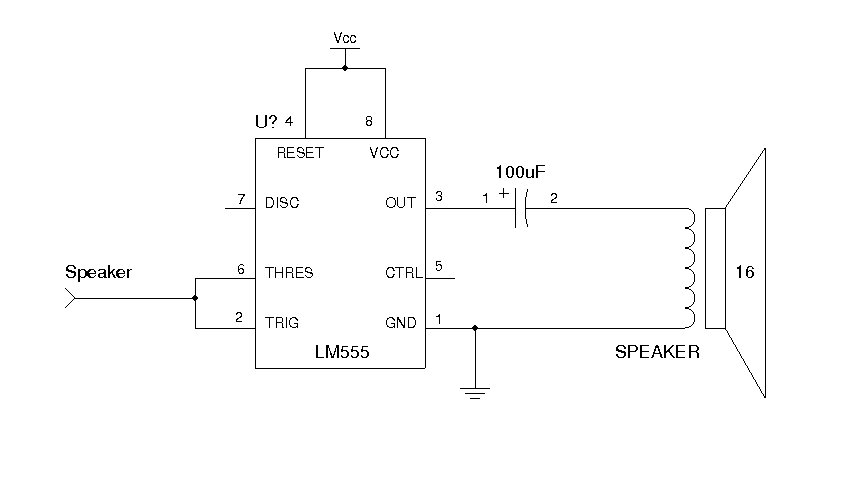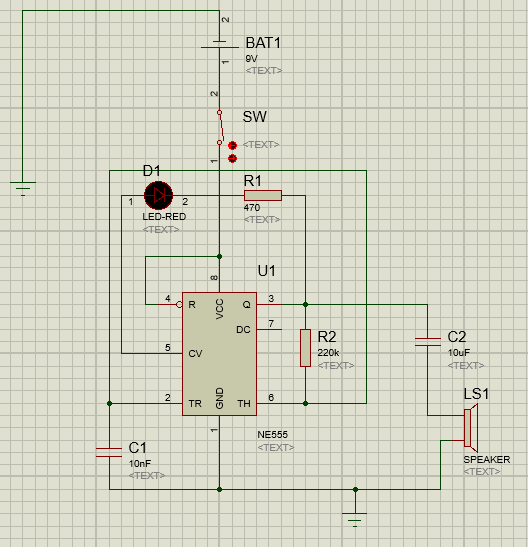

Dividing those values by two, we get the following: So in reality, we actually need to be able to flip bits twice as fast as the times outlined above. In one red portion of the wave, the value needs to change twice. If you take a look at the green portions on the image above you’ll see what I’m talking about. From the formula above, we can determine the following periods required to generate each note:īut, remember that we are dealing with a microcontroller, so we need to flip the value twice every period. The red portion of the square wave represents one cycle. In other words, each frequency pin will have to cycle from 0V to 5V and back again in the time dictated by the period for that note. Now, think back to physics, and recall that period = 1/frequency.
555 TIMER DRIVING SPEAKER SOFTWARE
While the tone() function can only be run one instance at a time, I discovered (after much research), that I could hijack one of the timers (again, I chose timer2), and use some clever math and software interrupts to generate 5 tones simultaneously! I wanted to generate 5 tones of the following frequencies:Īny music lovers out there will surely recognize this as the pentatonic scale (5 notes that nearly always sound good together).
555 TIMER DRIVING SPEAKER HOW TO
But I wanted to make 5 tones simultaneously! How to do it? So you naturally loose that ability when using the tone() function. Specifically, it uses timer2, which is also responsible for controlling PWM on pins 3 and 11. It relies on one of the arduino’s 3 timers to work in the background. The built-in tone() function allows you to generate a square wave with 50% duty cycle of your selected frequency on any pin on the arduino. Unfortunately, none of these generated tones as nice as the ones I got when simply using the arduino tone library. I examined several methods for generating the 5 square waves in hardware – using a 555 timer, oscillating RC with schmitt trigger, and a bunch of opamp circuits. I’m working on a project where I want to drive 5 speakers independently – each with a variable volume and set frequency (though the frequency of each speaker is different).
555 TIMER DRIVING SPEAKER CODE
Mimi Yin has a neat implementation of this code for an interactive sculpture. Here you have separate ON and OFF buttons to control an LED.This post was featured on the Hack-a-Day Blog on 9/14/10

The following example shows the 555 Timer in bistable mode. Or separate the ON and OFF switch for a machine. You can for example use it to reverse the direction of a robot when it bumps into a wall. In this mode, the 555 Timer works as a flip-flop. This mode isn’t a timer function at all, and it’s not a common way to use the 555 Timer. You push it from one state to the other with the Trigger and Threshold pins. It will stay in one state until you push it over to the other state. Bistable (Flip-Flop) Modeīistable means the output is stable in both states (HIGH and LOW). See how in the section Driving Higher Loads below. Just replace R3 and the LED with a transistor. The output is connected to control an LED, but could easily be modified to control a motor, a lamp, a coffee maker, or anything else. Use the 555 Timer calculator to find the values you need. If you want an adjustable delay, replace R1 with a potentiometer.

This pin is unconnected when output is high, and it’s connected to ground when output is low. This pin sets the output back to low when the voltage goes high (above two-thirds of VCC). So you can try adding a capacitor between this pin and ground if your circuit is not working. Note: I’ve heard from people not able to get their circuit working without this capacitor. Sometimes you’ll see this pin connected with a capacitor (0.01 ♟/10 nF) to ground this is a way to keep any noise on it from influencing the frequency. This can be useful when you want to adjust the frequency of the circuit without changing the values of R1, R2, and C1. This pin is used to control the threshold voltage of the Threshold pin. This means the pin must be high normally so that the chip isn’t in a “reset” state.

It’s an “inverted” pin, which means it resets when the pin goes low. Check your chip’s datasheet for the exact value. A 555 timer can give out only 100 to 200 mA in total. The output voltage from the chip is around 1.5 V lower than VCC when high and around 0 V when low. When this pin goes low (less than one-third of VCC), the output goes high. This pin connects to the negative side of the battery.


 0 kommentar(er)
0 kommentar(er)
